

| The central market square was transformed in the 16th century to this Castilian Baroque plaza, the site over the centuries of bullfights, executions, auto-da fés, canonization of saints (including Teresa of Avila, Ignatius Loyola, Isidro, and Francis Xavier), royal marriages, and masked balls, among other events. Fairs, markets, and performances are still hosted here. | ||
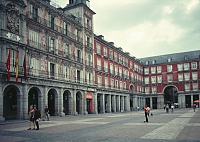
|
At 300 x 360 feet, this plaza is one of the largest public squares in Europe. Juan de Herrera (architect of the Escorial) drew the initial plans for the Plaza Mayor in the 1560s at the instigation of Philip II . The only part constructed for a time was the Casa de la Panadería with its two towers, completed in the 1590's. Juan Gómez de Mora, Herrera's most important student, completed the Plaza Mayor in 1619 under the reign of Philip III. See also Casa de la Villa. | |
| The square has arcades in the Italian Renaissance style. The royal cartouche and sculpted crown identify the square with its royal patronage. | 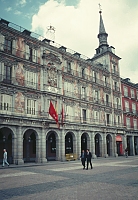
|
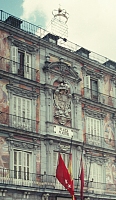
|

|
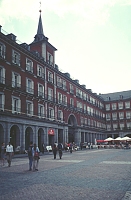
|
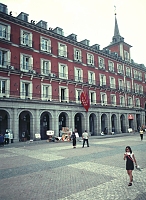
|
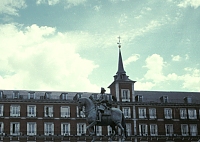
|

|
This equestrian statue of Philip III by Giambologna and Pietro Tacca was moved to the center of the Plaza Mayor in the nineteenth century. |
A loggia; an impressive portal |
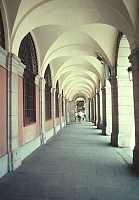
|
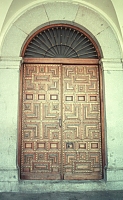
|
 Click here to return to index of art historical sites.
Click here to return to index of art historical sites.
 Click here to return to index of artists and architects.
Click here to return to index of artists and architects.
 Click here to return to chronological index.
Click here to return to chronological index.
 Click here to see the home page of Bluffton College.
Click here to see the home page of Bluffton College.
